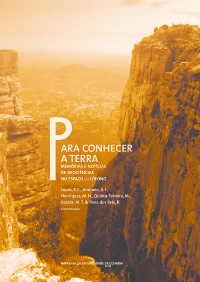Please use this identifier to cite or link to this item:
https://hdl.handle.net/10316.2/31443| Title: | Panorâmica sobre a estrutura, mineralogia e recursos dos pegmatitos do Linguço em Moçambique | Other Titles: | An overview on structure, mineralogy and resources of licungo pegmatites (Mozambique) | Authors: | Moiana, M. Gomes, C. A. L. Dias, P. |
Keywords: | Licungo;Pegmatite;Zoning;Deformation;Licungo;Pegmatito;Zonalidade;Deformação | Issue Date: | 2012 | Publisher: | Imprensa da Universidade de Coimbra | Journal: | http://hdl.handle.net/10316.2/24406 | Abstract: | Mineralogy and distribution of base resources and potential reserves in Licungo
Pegmatite Field is mainly related to the position of 1st order structural alignments NNE-SSW
and NNW-SSE. These mega-structures allowed the intrusion of major pegmatite bodies (> 3
m in thickness and > 30 m in length) at the northern sector. Here, paragenetic fractionation
was favourable to the individualization of inner primary units and graphic pegmatite at the
border. At the southern sector shear-related dilations were probably responsible for the appearance
of small pegmatite bodies (0.25-1.20 m in thickness and 10-30 m in length) containing
thinner primary zones, but with higher content of aquamarine beryl, which might be explained by ion exchanges between meta-ultramafic country rocks and small pegmatite bodies, during early emplacement. A mineralogia e a distribuição dos recursos base e reservas do Campo Pegmatítico do Licungo está condicionada, principalmente, a alguns lineamentos estruturais de 1ª ordem, de orientação NNE-SSW e NNW-SSE. Estas mega-estruturas acolheram a instalação, no norte, de corpos pegmatíticos de grandes dimensões (> 3 m de possança e > 30 m de extensão), onde a fracionação permitiu a individualização de unidades primárias internas e texturas gráficas na bordadura. Em contrapartida, as estruturas de cisalhamento, provavelmente tardias, no sul, induziram a abertura de menores caixas filoneanas e a instalação de corpos pegmatíticos de pequenas dimensões (0,25 a 1,20 m de possança e 10-30 m de extensão), com zonas internas menos volumosas mas maior apetência para a ocorrência de berilos da variedade água-marinha, graças à maior capacidade de troca de constituintes entre as rochas encaixantes meta-ultramáficas e os pequenos corpos pegmatíticos |
URI: | https://hdl.handle.net/10316.2/31443 | ISBN: | 978-989-26-0534-0 (PDF) | DOI: | 10.14195/978-989-26-0534-0_28 | Rights: | open access |
| Appears in Collections: | Para conhecer a Terra: memórias e notícias de Geociências no espaço lusófono |
Files in This Item:
| File | Description | Size | Format | |
|---|---|---|---|---|
| 28-para_conhecer_a_terra_artigo.pdf | 948.62 kB | Adobe PDF |  |
Items in DSpace are protected by copyright, with all rights reserved, unless otherwise indicated.
